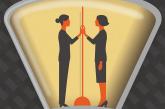Article
New and Emerging Treatments for Major Depressive Disorder
- Author:
- Joseph F. Goldberg, MD
Treatment of major depressive disorder is being transformed by new compounds with different mechanisms of action. Dr Joseph Goldberg discusses...
Article

GLP-1 agonists for weight loss: What you need to know
- Author:
- Joseph F. Goldberg, MD
Evidence suggests substantial beneficial effects on weight and glycemic dysregulation.
Article
What to Do When Your Depressed Patient Develops Mania
- Author:
- Joseph F. Goldberg, MD
- Carrie L. Ernst, MD
When does mania signal bipolar disorder, another medical illness, or the adverse effects of a prescribed antidepressant? And what are the next...
News

What to do when your depressed patient develops mania
- Author:
- Joseph F. Goldberg, MD
- Carrie L. Ernst, MD
When does mania signal bipolar disorder, another medical illness, or the adverse effects of a prescribed antidepressant? And what are the next...
Video

Novel treatments for depression
- Author:
- Joseph F. Goldberg, MD
Joseph F. Goldberg, MD, discusses future treatments targeting the glutamate system,such as ketamine, for treatment-resistant mood disorders.
News

Second of 2 parts: A practical approach to subtyping depression among your patients
- Author:
- Joseph F. Goldberg, MD
Improve outcomes by understanding the forms that depressive disorders can take
Audio

Value of subtyping depression
- Author:
- Joseph F. Goldberg, MD
News

The first of 2 parts: A practical approach to subtyping depression among your patients
- Author:
- Joseph F. Goldberg, MD
Increase treatment success by assessing for the multiple forms that depressive disorders take
Audio
Treating patients with suspected ultra-rapid cycling bipolar disorder
- Author:
- Joseph F. Goldberg, MD
Joseph F. Goldberg, MD
News
Ultra-rapid cycling bipolar disorder: A critical look
- Author:
- Joseph F. Goldberg, MD
Key factors help differentiate mood shifts in BD from other types of affective lability
News
Antidepressants in bipolar disorder: 7 myths and realities
- Author:
- Joseph F. Goldberg, MD
Dispelling misconceptions leads to rationale-based steps for treating bipolar depression
